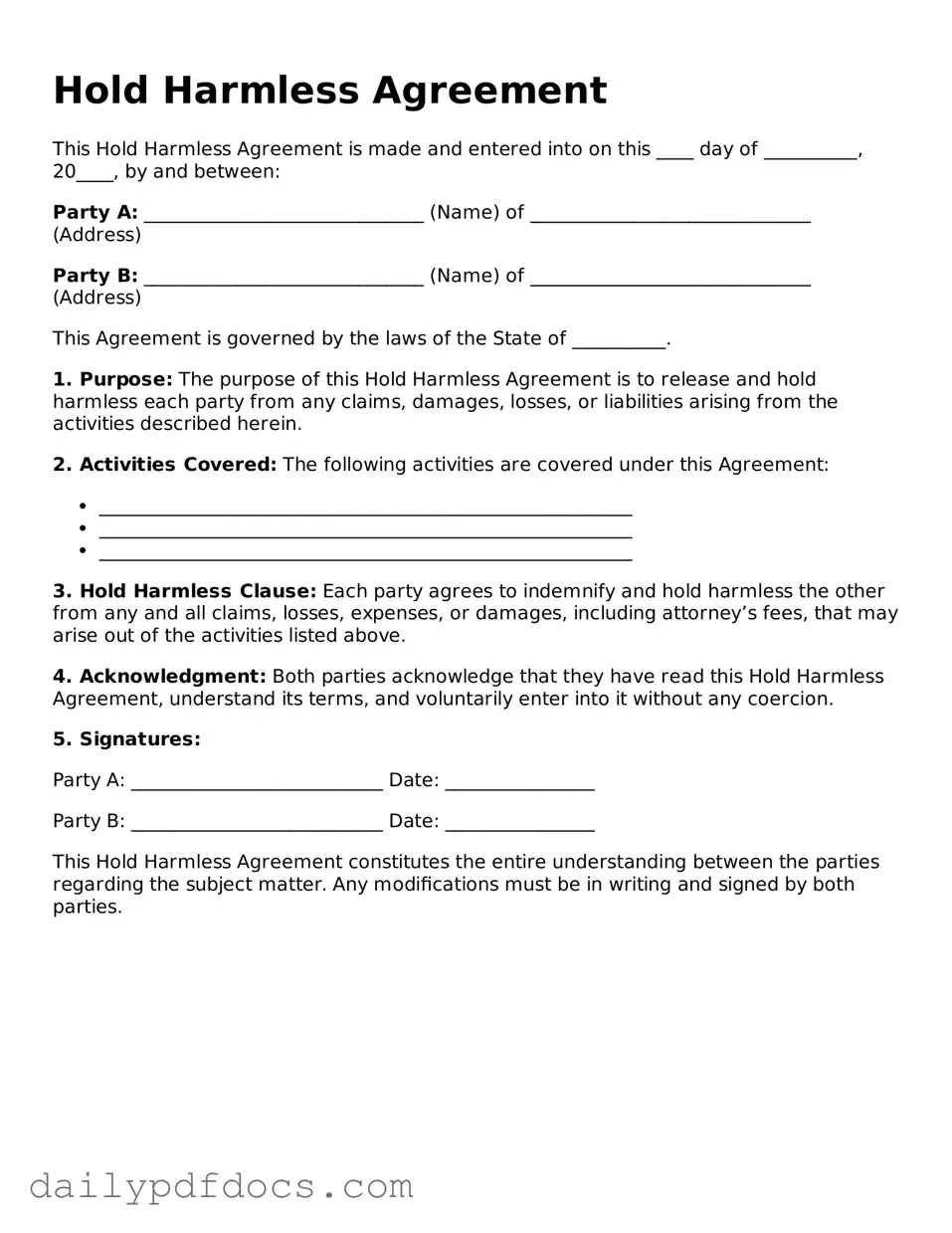Hold Harmless Agreement
This Hold Harmless Agreement is made and entered into on this ____ day of __________, 20____, by and between:
Party A: ______________________________ (Name) of ______________________________ (Address)
Party B: ______________________________ (Name) of ______________________________ (Address)
This Agreement is governed by the laws of the State of __________.
1. Purpose: The purpose of this Hold Harmless Agreement is to release and hold harmless each party from any claims, damages, losses, or liabilities arising from the activities described herein.
2. Activities Covered: The following activities are covered under this Agreement:
- _________________________________________________________
- _________________________________________________________
- _________________________________________________________
3. Hold Harmless Clause: Each party agrees to indemnify and hold harmless the other from any and all claims, losses, expenses, or damages, including attorney’s fees, that may arise out of the activities listed above.
4. Acknowledgment: Both parties acknowledge that they have read this Hold Harmless Agreement, understand its terms, and voluntarily enter into it without any coercion.
5. Signatures:
Party A: ___________________________ Date: ________________
Party B: ___________________________ Date: ________________
This Hold Harmless Agreement constitutes the entire understanding between the parties regarding the subject matter. Any modifications must be in writing and signed by both parties.
